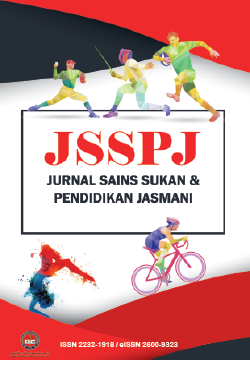Perception of Student Athletes towards the Leadership Behavior of Coaches at Malaysian Sports School Terengganu
DOI:
https://doi.org/10.37134/jsspj.vol11.1.10.2022Keywords:
perception, leadership behavior, coachAbstract
The purpose of this study was to identify the perceptions of student athletes on the leadership behavior of coaches in Sekolah Sukan Malaysia Terengganu. The study sample consisted of six (6) student -athletes from Sekolah Sukan Malaysia Terengganu, Kuala Nerus, Terengganu who agreed to be interviewed. Out of a total of six (6) respondents, five (5) were male student athletes and one female student athlete. Four (4) types of sports were involved in this study, namely, three (3) student athletes from athletics, one male student athlete from cycling, one male from sepak takraw and one female student athlete from weightlifting. Four (4) main themes were derived from the results of the analysis namely positive feedback behavior, training behavior and instruction, social supportive behaviors and autocratic behaviors. The dimension of positive feedback behavior is a major factor in the perception of student athletes towards the leadership of coaches at Sekolah Sukan Malaysia Terengganu.
Downloads
References
Ball, D. W. (1975). A note on method in the sociological study of sport. Sport and social order: Contributions to the sociology of sport. Reading, MA: Addison-Wesley.
Chelladurai, P., & Carron, A. V. (1981). Applicability to youth sports of the leadership scale for sports. Perceptual and Motor Skills, 53(2), 361-362.
Chelladurai, P. (1984). Discrepancy between preferences and perceptions of leadership behavior and satisfaction of athletes in varying sports. Journal of Sport and Exercise Psychology, 6(1), 27-41.
Chelladurai, P. (1990). Leadership in sports: A review. International Journal of Sport Psychology.
Chelladurai, P., & Saleh, S. D. (1980). Dimensions of leader behavior in sports: Development of a leadership scale. Journal of Sport Psychology, 2(1).
Fiedler, F. E. (1967). A theory of leadership of predictiors of leadership effectiveness. New York: McGraw – Hill Book company.
Horne, T., & Carron, A. V. (1985). Compatibility in coach-athlete relationships. Journal of Sport and Exercise Psychology, 7(2), 137-149.
Sabock, R.J. (1979), The Coach (2nd ed.). Philadelphia, PA: W.B. Saunders.
Sage, G. H. (1973). The coach as management: Organizational leadership in American sport. Quest, 19(1), 35-40.
Sherman, C. A., Fuller, R., & Speed, H. D. (2000). Gender comparisons of preferred coaching behaviors in Australian sports. Journal of Sport Behavior, 23(4), 389.
Sullivan, P.J., & Kent, A. (2003). Coaching efficacy as a predictor of leadership style in intercollegiate athletics. Journal of Applied Sport Psychology, 15, 1‒11.
Tutko, T. A., & Richards, J. W. (1971). Psychology of Coaching. Boston: Allyn and Bacon.
Wildman, L. (2006). Best practice: Instructional leadership through teacher evaluation Handbook of the National Council of Professors of Educational Administration. Lancaster, PA: Technomic Publishing Co
Downloads
Published
Issue
Section
License
Copyright (c) 2022 Mazuki Mohd Yasim, Asro Otman, Thariq Khan Azizuddin Khan, Nur Ikhwan Mohamad

This work is licensed under a Creative Commons Attribution-NonCommercial-ShareAlike 4.0 International License.





